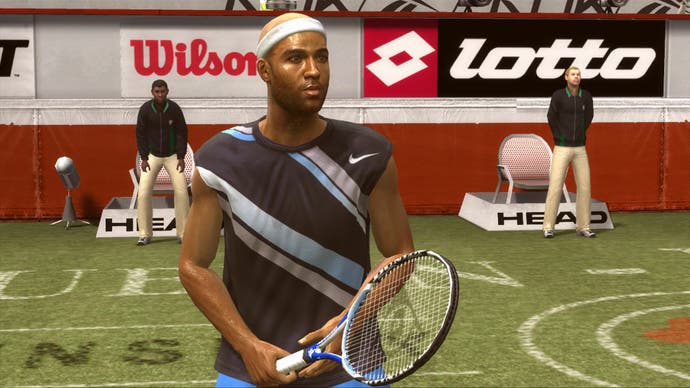Top Spin 3
Love at first service.
First they giveth, then they taketh away. Last time around, PAM slightly overcooked Top Spin 2's controls with layers of added complexity which appeared to add depth at the consequence of making it far less intuitive and playable than its deadly rival, Virtua Tennis. As good a game as it undoubtedly was, there was always the nagging sense in the back of your mind that you'd rather be playing SEGA's ageless offering.
At the same time, though, online play was always Top Spin's ace in the hand - and still is, thanks to SEGA's utterly botched online implementation in last year's otherwise excellent Virtua Tennis 3. To rival or even usurp the mighty VT, all PAM had to do was refine a few key areas in the playability department and the throne would finally be theirs. Strangely though, PAM has almost gone back to the drawing board rather than merely tweak a few things, and manages to make an equal number of good and bad decisions along the way. Initially, the refinements to the control system feel like a terrible decision.
For the first time in possibly the history of tennis titles, Top Spin 3 is almost impossible to simply pick up and play. Even against the rookies in career mode, you'll struggle pathetically and wonder what on earth you're doing wrong. Serves will fly limply off target, returns won't go anywhere near where you want them to, and you'll lumber along like a complete chump struggling to win a single point. It's the anti Wii Sports Tennis - a counter-intuitive tennis game that only the committed hardcore player will be able to play.
However, once you take the time to progress through the extensive series of tests in the Top Spin School, it slowly starts to fall into place. For a start, you'll realise there's no longer a power meter to fall back on, meaning you have to rely on good old-fashioned judgement and timing. Holding one of the four shot buttons (mapped to the four face buttons of the pad) dictates the power, while moving the stick in the direction you want it to go just before your racquet hits the ball completes the two-step process. For a while, it's maddeningly tough to retrain your thumbs to this subtly different approach, and the series of tests you face are, without doubt, the most exacting ever conceived in a tennis title - but in the long term it serves you very well. (Sorry.)

As with previous Top Spin titles, there remains the curious ability to perform 'risk shots' by holding down the left trigger (for accuracy), right trigger (for added power) or both at the same time as you select your desired serve or shot. But as tempting as it is to go gung-ho, the timing has to be absolutely spot-on to pull it off, and when matches are hanging by a thread, it'll be a brave player who tries it on. In truth, all bar the most advanced players will ever master it - I've played them all, and it's a trick that, to this day, eludes me.
Fortunately, relying on risk shots isn't something you have to worry about to progress in the game, and there are a ton of other factors that are just as important to becoming good. Knowing the right time to use flat shots, top spin, slice, lobs and drop shots are just as crucial, as is mastering the power timing and the amount of extra directional emphasis when you're placing your return. It might not be anywhere near as straightforward to control as the beloved VT, but with time and practice, Top Spin 3's added depth and challenge makes it equally compelling in other respects. Its main downside is the fact that you can't simply hand the pad to the newcomer and expect them to get to grips with its complicated nuances. In that respect, the everyman VT wins every time.

But if you can be bothered to stick with what's demanded of you, Top Spin 3 becomes an excellent game. Diving back into the game's pivotal Career mode with the essential knowledge acquired in the Top Spin School, you'll start to move swiftly through the ranks. Rather than simply put you at the bottom of a top 200 ladder and expect you to work your way up, Top Spin 3 features an entirely different approach. Initially you'll simply have to beat three amateurs and six challengers over three games before you can enter the main meat of the game, but once you qualify for the Junior stage, you enter a season where the aim is to finish number one at the end of a year of monthly tournaments. With a choice of easy or hard contests, you can either plump for more financially and XP-rewarding tournaments or go for ones that are easier to win. When your player is a piddling newbie, it's probably wisest to take the safe option, build up your stats a little, then dig into the hard tournaments and push for the top slot towards the second half of the season.


